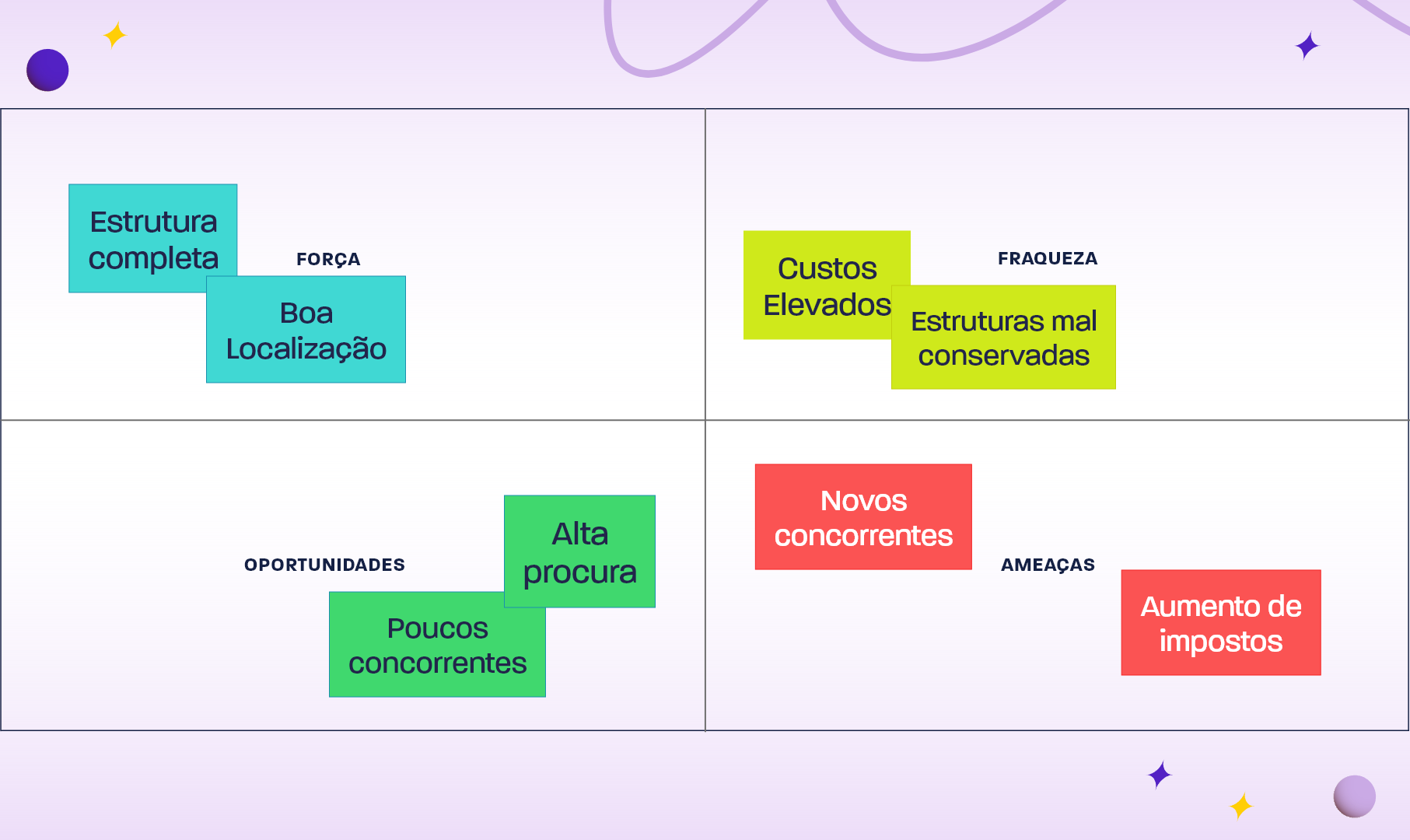Take your SWOT Analysis to the next level

Strytegy
November 12, 2021
Do you want to take your SWOT Analysis to the next level? Check out this step by step guide to generate concrete action plans based on your strategic analysis.

Although it is quite simple, the SWOT Matrix is a powerful tool to help companies reflect upon their strategic plans. It is a visual and quick way to look inside your company and think about strengths and weaknesses, and then look outside to identify opportunities and possible threats to your business.
However, SWOT alone does not guarantee successful strategic planning. The most important part, and maybe the most difficult, is to transform this analysis into concrete strategies, and create action plans for your team.
To help with this issue, Heinz Weihrich created TOWS (which is just SWOT written backwards), a variation of SWOT analysis that helps you create strategies that take advantage of your strengths and minimize the risk associated with your weaknesses.
To apply this method, the first step is actually just to create your SWOT Matrix as usual, listing Stregths, Weaknesses, Opportunities and Threats. Next, you need to combine your analysis of internal environment (S and W) and external environment (O and T), and create strategies for each combination:
SO (Strengths and Opportunities): How can your Strengths help you seize the Opportunities available in the market right now?
ST (Strengths and Threats): How can your Strengths help you minimize the risk of the Threats you identified?
WO (Weaknesses and Opportunities): How can you leverage Opportunities in the market to overcome your Weaknesses?
WT (Weaknesses and Threats): What kind of defensive strategies can you create to minimize Weaknesses and Threats at the same time?
Next, we are going to show you a detailed step by step guide to help you apply TOWS and take your strategic analysis to the next level.
Step 1: SWOT Matrix
The first step in TOWS is nothing more than creating your own SWOT Matrix, as usual. Start by analizing the internal aspects of your company, and list all your Strengths and Weaknesses. Next, reflect upon the external environment, and list Opportunities that can help your company, and Threats that can put your business at risk.
Although SWOT might seem simple, a good analysis demands a great deal of prior research and reflection. The more you dive into your business characteristics, base yourself on real data, and involve people from other departments, the more accurate will be your listing of Strengths and Weaknesses. Likewise, you won’t be able to correctly identify Threats and Opportunities without a good understanding of your competitor, market trends, consumer habits and the overall macroeconomic scenario.
If you still don’t have a clear understanding of all these parts, the best option is to stop and dedicate yourself to research for a while.
When you are finally ready to assemble your Matriz, you can write everything on paper, or use a free digital template, like this one.
Step 2: SO - Strengths and Opportunities
With your SWOT analysis ready, we can dive into TOWS.
The method suggest we start by thinking about how your company Strengths can helo you seize the Opportunities that appear in the market.For example, let’s suppose one of your Strengths is to have a very experienced and productive product development team. This can help you be the first one to launch a product for a new consumer demand.
But the most important thing here is to avoid abstract statements.If you identified a Strength that can help you, create a concrete and actionable strategy to describe how would you leverage this characteristic to take advantage of an Opportunity. This strategy is good if you can break it down into action plans your team can perform and deliver.
Step 3: ST - Strengths and Threats
Now you will think about how your Strengths can help you deal with the Threats you identified.
Are there many new entrants in your category? Maybe a strong reputation and tradition (Strength) can help you reduce the risks of this Threat to your business. What kind of strategies could you apply to take advantage of your reputation and take the lead before these new competitors?
Step 4: WO - Weaknesses and Opportunities
Here, the perspective is different: instead of looking at a characteristic of your company to deal with external factors, we will look at market Opportunities to find ways to overcome our own Weaknesses.
Maybe your company is not so good at innovating, since you have traditional and well-established products and a culture that resists change (Weakness). Meanwhile, the market is full of new and fresh companies with innovative ideas, craving for funding (Opportunity). Investing or acquiring one of these companies can bring more creativity to your business.
Step 5: WT - Weaknesses and Threats
This last combination prompts you to think about defensive strategies.
It isn’t always easy to decide to invest money and effort only to defend yourself, and maintain your current position. It is much more interesting to only think about ways to expand and harness profits. For this reason, TOWS urges you to think of strategies that can fight both Weaknesses and Threats at the same time, optimizing the use of your resources.
In the beginning of the Covid-19 pandemic, many restaurants saw themselves in a complicated situation, where consumers weren’t willing to eat out (Threat). However, the restaurants still had to maintain a costly physical structure (Weakness). Investing in dark-kitchens and delivery systems were ways that these businesses found to minimize the negative effects of both a Threat and a Weakness together, optimizing their efforts.
Step 6: Prioritizing
Once you have all this written down, the last step is to prioritize all your strategies. You should take into consideration how much effort is necessary to conduct each one of them, and compare this with the value that they can bring to your business.
In this step, it is very important that you involve other people from the company to help in defining the level of effort and maybe find some “side effects” that each strategy could cause. Debate and put all your ideas in order, so you can create a concrete action plan to implement them.
With these 6 steps, you will be able to take your strategic analysis to the next level, going from abstract listings of Strengths, Weaknesses, Opportunities and Threats to a more concrete definition of strategies that can be translated into executable action plans. As we said, your analysis will be even better if you do it collaboratively, and involve other people from your company in the process.
To do that, take advantage of any digital tools you can find with real time collaboration. In Strytegy, we offer a free online space where you and your team can work together using a SWOT Template and an Infinite White Board to create your strategic analysis and use all the power of TOWS. All you have to do is create a free account and start planning!
